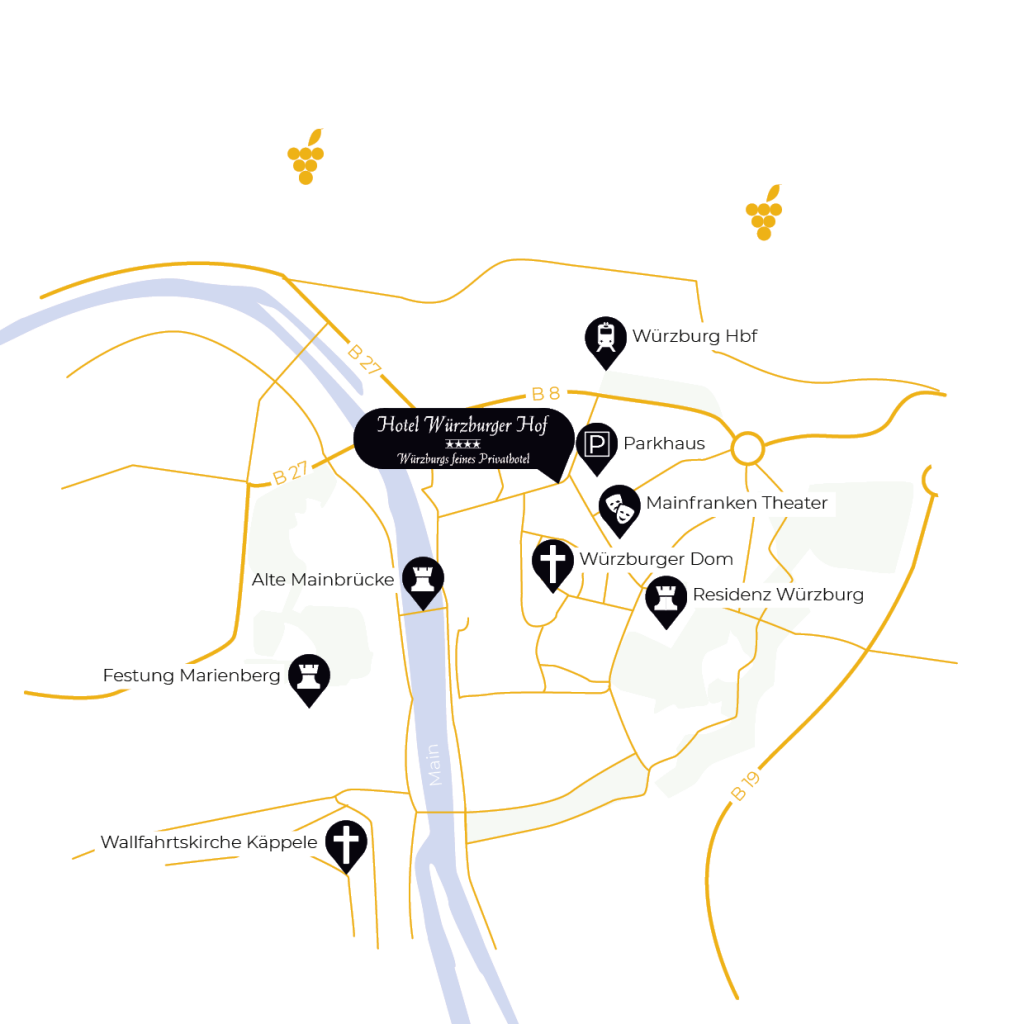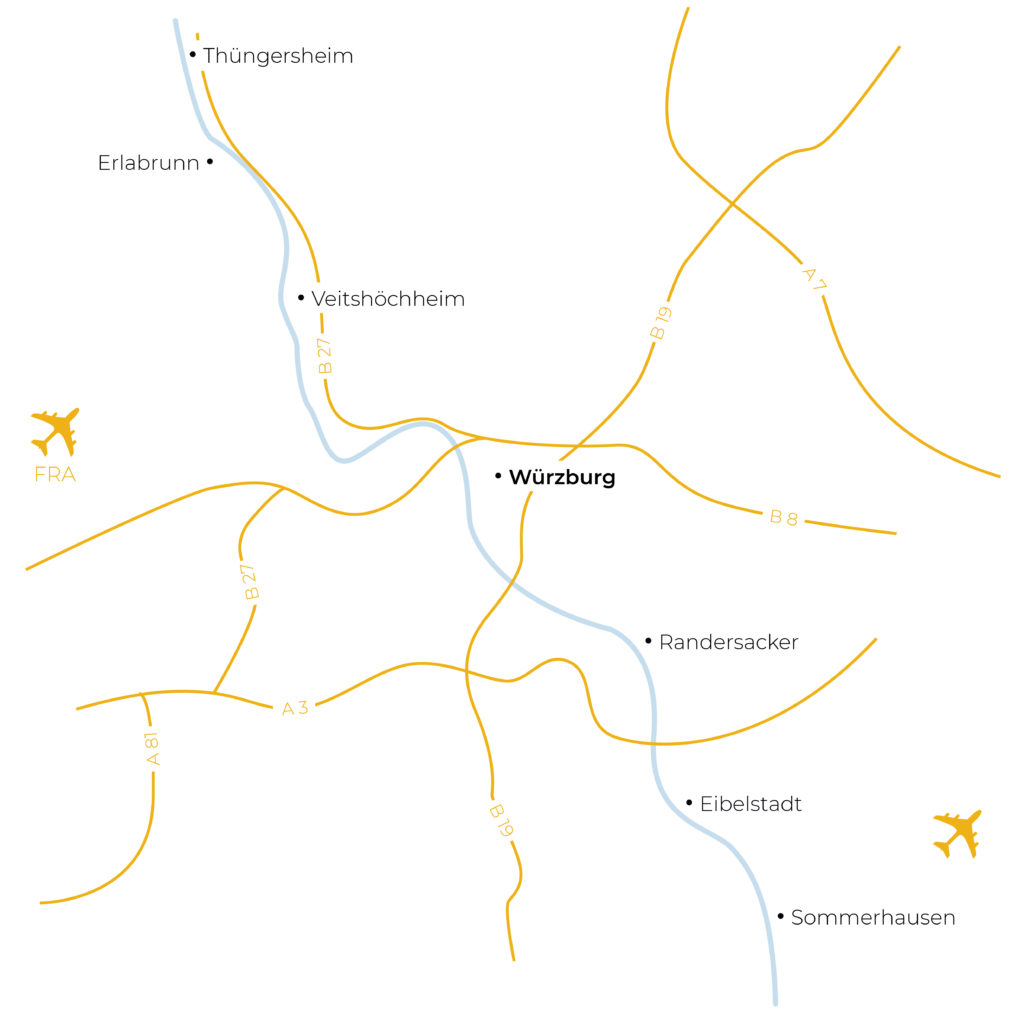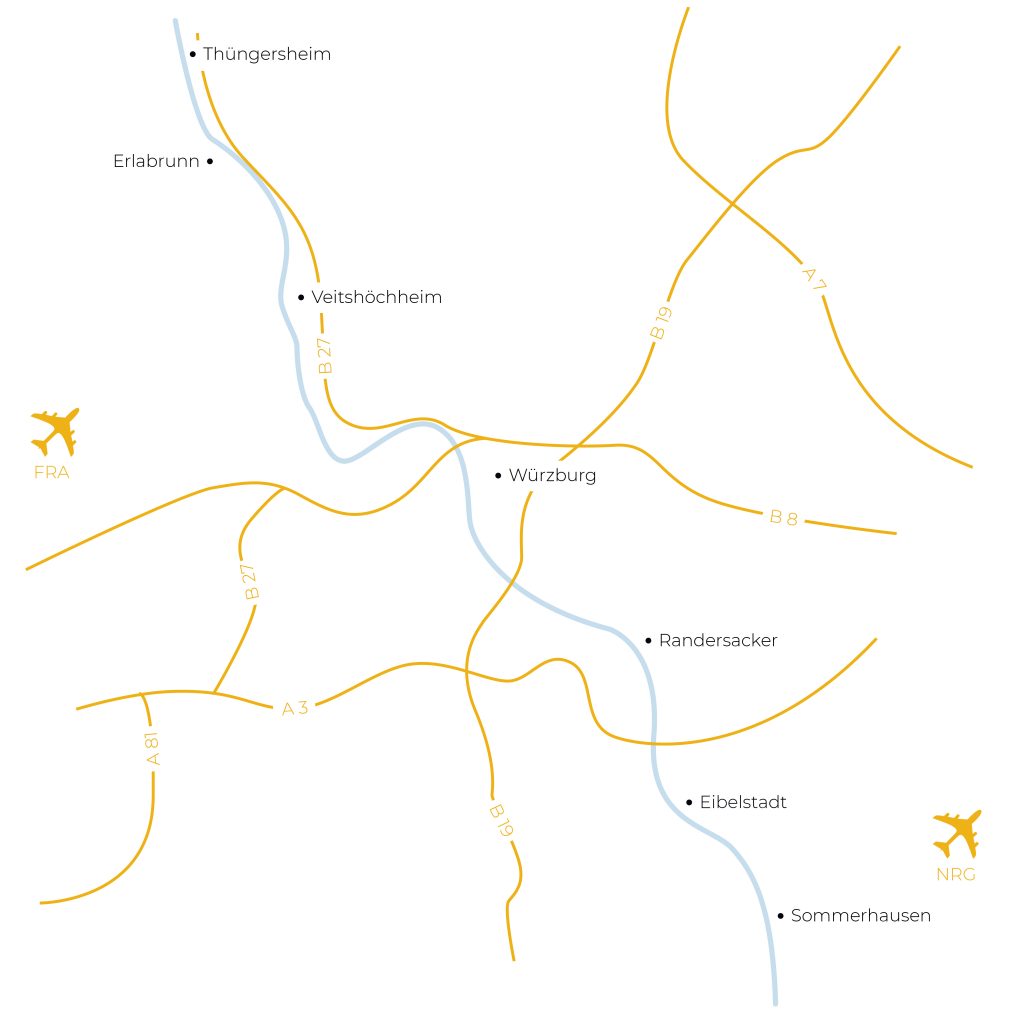ORIGIN OF THE HOTEL
From the inn to the hotel
- In the 19th century, the “Gasthaus zur Stadt Würzburg” was located on Barbarossaplatz: a ground-level building on the corner of the narrow Oberthürgasse. With its shady garden, it was already considered an oasis in the turbulent city life. In 1908, Michael Erb bought the property and spent three years remodelling and renovating it.
In 1911, the house opened in new splendour as the Würzburger Hof. - On the day of the reopening or rather new opening of the Würzburger Hof in 1911, a large advertisement appeared in the local and regional newspapers: “I hereby take the liberty of expressing to a very honoured population of Würzburg and the surrounding area, in particular to my esteemed neighbourhood, as well as to my friends and acquaintances, also to the HH business travellers and tourists that on 1st of May of this year I will be taking up residence in Würzburg. I will open a modern restaurant on the ground floor, in addition to my present ground floor premises.
- Based on my many years of experience, I will always endeavour to meet the wishes of my honoured guests through strictly real business management, good cuisine, guaranteed pure wines and beers from the Würzburg brewery.
- I would especially like to draw the attention of HH I would particularly like to draw the attention of HH travellers to my newly refurbished guest rooms (with electric light) which offer only good beds at reasonable prices. I also note that from 4 o’clock in the afternoon, light export beer, straight from the barrel, is on tap. Monday, 1st of May (1911): Opening ceremony with concert. Michael Erb and his wife ask for numerous visitors.”
Expansion and destruction
- From the very beginning, the Würzburger Hof was considered one of the top addresses in the city. In the first decade of its existence, the building was even extended and enlarged several times – despite the First World War and persistent inflation. When the economy recovered, the owning family called Erb decided to build an elaborate new building in 1924/25, which was to give the hotel its expensive interior design an edge over the nearby “Russischer Hof”. The house had more than 100 beds. The magnificent building with its stucco-decorated house facade and gold-coloured inscription “Würzburger Hof” was now visible from far as one moved from the railway station through Kaiserstraße directly towards the city centre and Barbarossaplatz. The guests’ automobiles – still rare in city traffic compared to horses, carts and carriages – were parked by the valet at that time and driven up when needed.
- During the Second World War, the historic old town of Würzburg was almost completely destroyed. During the heaviest bombing raid on 16th of March 1945, the Würzburger Hof also burned. The facade, including the golden
inscription, was destroyed. Of the numerous details in coloured marble, only the staircase from the vestibule to the first floor remains.
The hotel today
- Today, rebuilt and restored, the Würzburger Hof once again shines with its magnificent facade in traditional palace yellow, adorned with delicate white stucco. Until 2012, the hotel remained in the founding family. When no heirs could be found, the third generation founder’s granddaughter Martha Heinen-Kerkel and her husband Karl Kerkel, carefully passed on their traditional house. In the hands of experienced hotelier Sabine Unckell, the Würzburger Hof is now continuing its history.
- “I feel very connected to the family and am proud to be the fourth woman in a row to manage the hotel.” says the current hotel manager Sabine Unckell. It has always been a very individual house with great, strong women. The passionate hostess continues this tradition with enthusiasm. In each of the lovingly designed 34 rooms and suites you can clearly sense this ranging from cosy and compact to luxuriously spacious. Here you are clearly spoilt for choice. At the Würzburger Hof you will find the pleasantly stimulating combination of a familiar atmosphere and a discerning, international clientele that is very rarely found.





